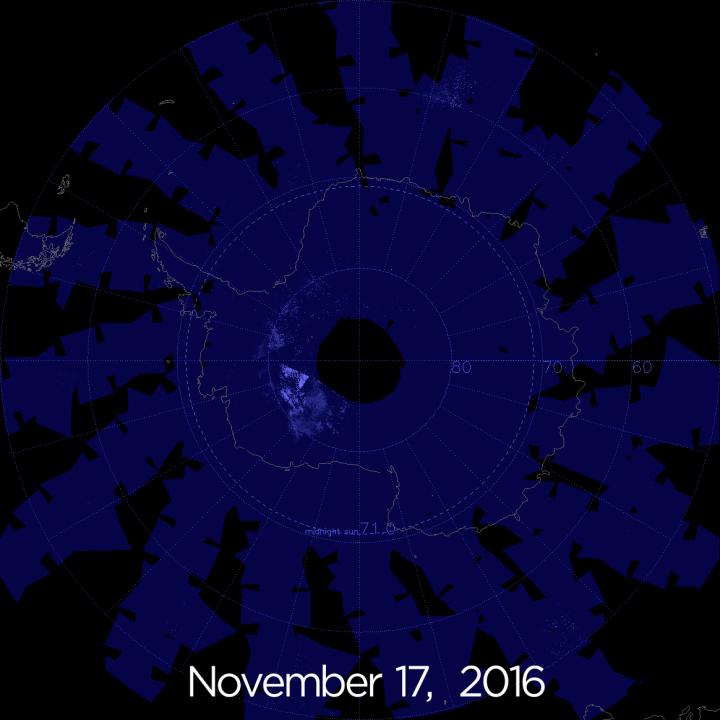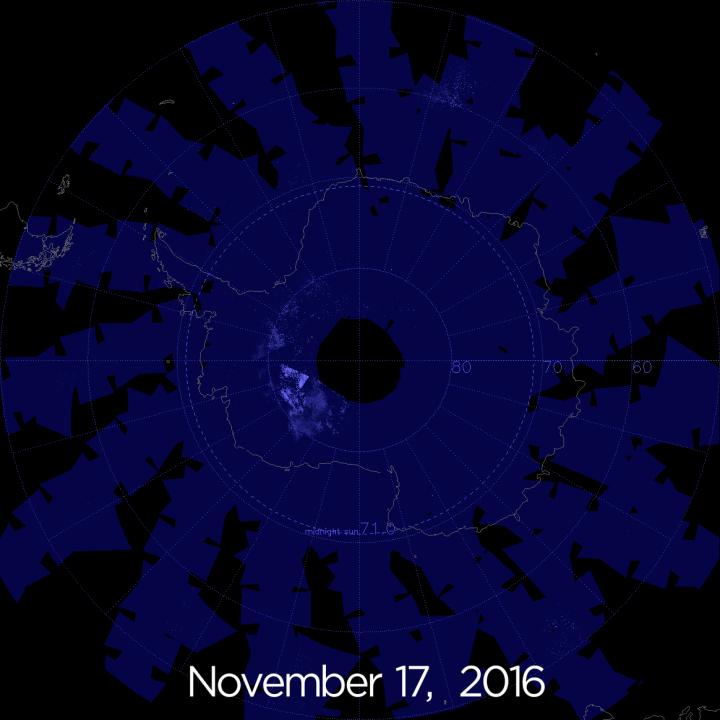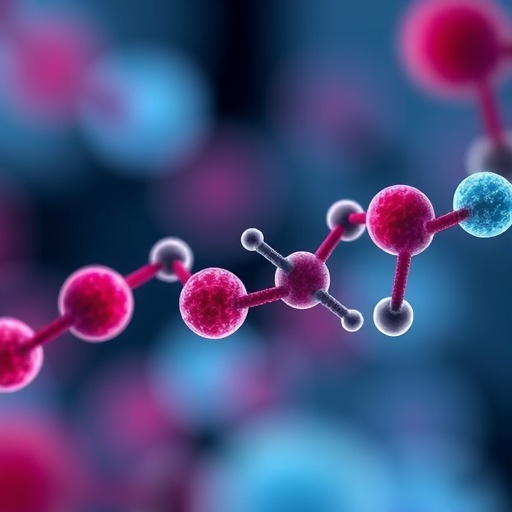
Credit: NASA/HU/VT/CU-LASP/AIM/Joy Ng, producer
Data from NASA's Aeronomy of Ice in the Mesosphere, or AIM, spacecraft shows the sky over Antarctica is glowing electric blue due to the start of noctilucent, or night-shining, cloud season in the Southern Hemisphere – and an early one at that. Noctilucent clouds are Earth's highest clouds, sandwiched between Earth and space 50 miles above the ground in a layer of the atmosphere called the mesosphere. Seeded by fine debris from disintegrating meteors, these clouds of ice crystals glow a bright, shocking blue when they reflect sunlight.
AIM studies noctilucent clouds in order to better understand the mesosphere, and its connections to other parts of the atmosphere, weather and climate. We observe them seasonally, during summer in both the Northern and Southern hemispheres. This is when the mesosphere is most humid, with water vapor wafting up from lower altitudes. Additionally, this is also when the mesosphere is the coldest place on Earth – dropping as low as minus 210 degrees Fahrenheit – due to seasonal air flow patterns.
This year, AIM saw the start of noctilucent cloud season on Nov. 17, 2016 – tying with the earliest start yet in the AIM record of the Southern Hemisphere. Scientists say this corresponds to an earlier seasonal change at lower altitudes. Winter to summer changes in the Antarctic lower atmosphere sparked a complex series of responses throughout the atmosphere – one of which is an earlier noctilucent cloud season. In the Southern Hemisphere, AIM has observed seasons beginning anywhere from Nov. 17 to Dec. 16.
Since its 2007 launch, AIM data has shown us that changes in one region of the atmosphere can effect responses in another distinct, and sometimes distant, region. Scientists call these relationships atmospheric teleconnections. Now, due to natural precession, the spacecraft's orbit is evolving, allowing the measurement of atmospheric gravity waves that could be contributing to the teleconnections.
###
AIM is a NASA-funded mission managed by NASA's Goddard Space Flight Center in Greenbelt, Maryland, and led by the AIM principal investigator from the Center for Atmospheric Sciences at Hampton University in Hampton, Virginia.
Media Contact
Lina Tran
[email protected]
@NASAGoddard
http://www.nasa.gov/goddard
############
Story Source: Materials provided by Scienmag





